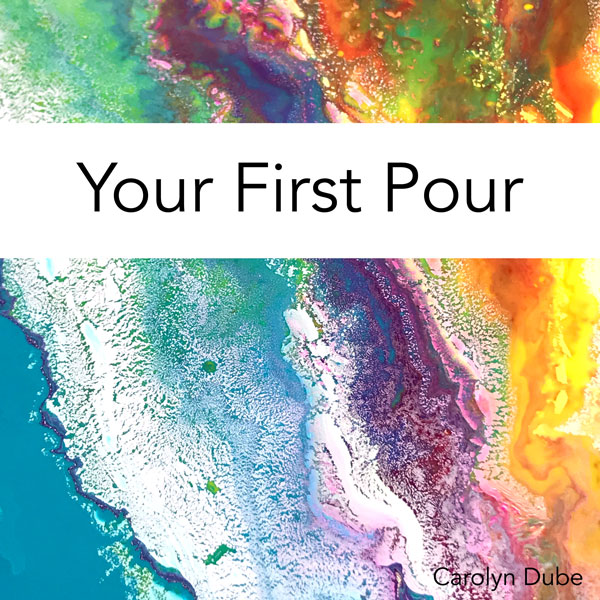
In the video, mention the entire set up and paint mixing information is in the supply section.
VIDEO MENTION: All one kind of pouring mixture- it helps with smooth drying
For this first pour, I would like you to trust me. There’s a lot of foundational information in this
Level surfaces make a difference.
Drizzle 3 primary colors and white around the canvas, overlapping, and near each other.
Then take a manilla tag and swipe it. Notice the vibrancy of the colors, and that it probably didn’t go all over and the edges, now start to tip it to slide (the electric slide), and notice the changes as the areas of color change, this is when colors are gently mixing. As you do this there will bald spots, then come in and fill those spots with color. Some large fields of color, some smaller drops, but fill in where you are called to do that.
If you forget the white, add it when you do and swipe it too. The more it pulls, the more it morphs. The white tends to get a ripped look, a crackle kind of thing as it gets stretched.
Every minuscule thing you do, impacts the end result. Every movement, the angle of the tip, the speed, drip impact of adding paints, the exact mixture of the paints and pouring medium all impact the results. So you can use a team of scientists to try to replicate, or you can go with the flow, quite literally. Let the paint surprise you and enjoy the adventure of seeing the canvas transform.
I’m going to do this technique 2 times, so you can see how to vary the technique.
Start with a red, yellow, blue and white.

You can use anything to pull the paint around. A fancy spatula or art tool or you can grab whatever is within reach. I used a manilla tag for the first one, and a piece of cardboard for the 2nd. Which is better? It is personal preference. Try a couple of different ways of swiping the paint and whichever feels best to you, that’s the right one for you.
Touching up the sides is easier for me when I have bit long bits of wet paint, and getting the paint to flow there.

Bubbles:
As it settles, keep an eye out for bubbles. You can breathe on it for the little ones but the big ones just pop with a pin.

But what it looked like when I turned off the camera, is not what it looked like at the end.